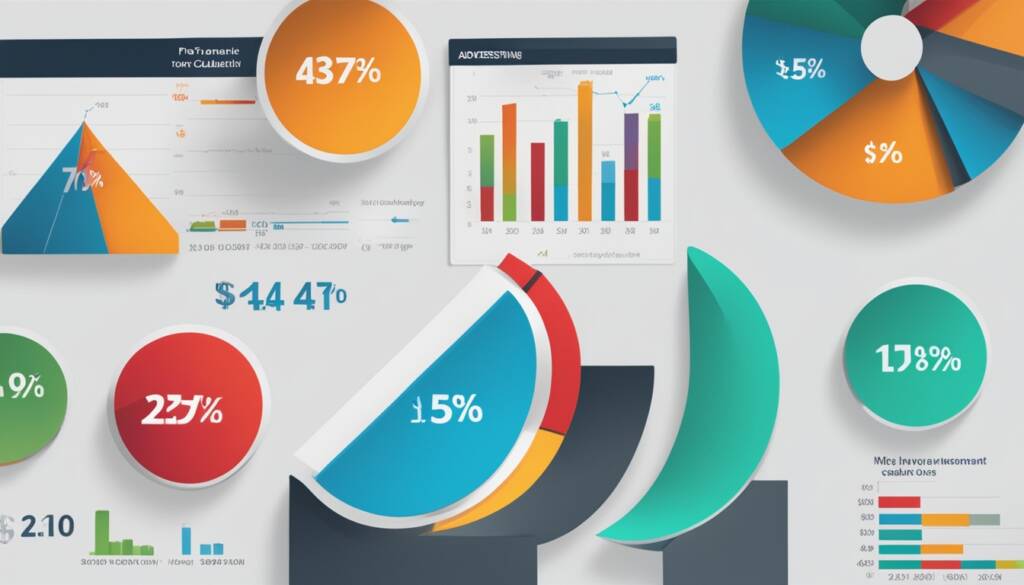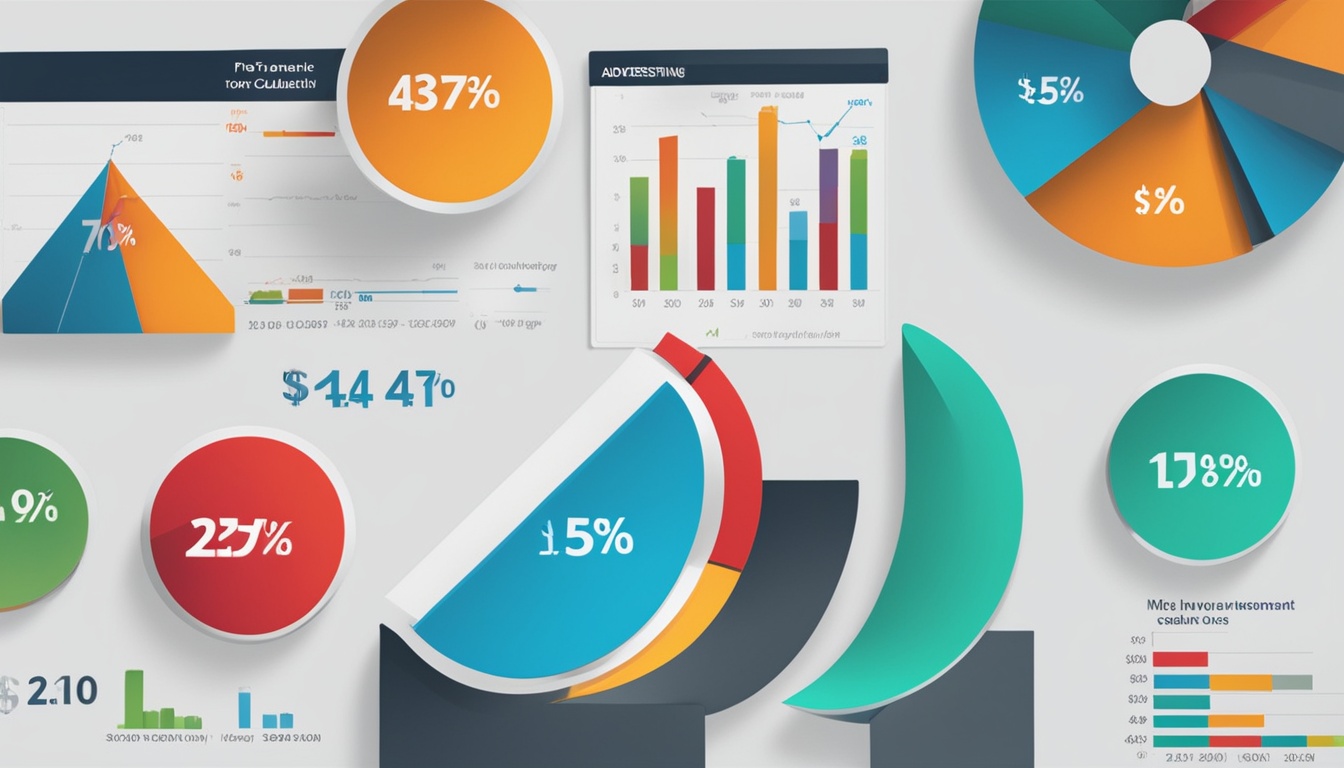At Web Ai Engine, we know how vital it is to measure ad success. We use Return on Ad Spend (ROAS) to check how well our ads do. It shows how much money we make from our ad spending. With our Web AI Engine, we make ROAS calculations better and more precise. This includes all ad costs and extra fees, giving a full picture of ad success1.

Key Takeaways
- ROAS is key to seeing how well campaigns and marketing investments do1.
- ROAS tells us how much money we make for every dollar spent on ads2.
- Good ad targeting and avoiding ad fatigue boost digital marketing success1.
- Advanced AI tools make ROAS calculations more accurate by looking at all costs.
- Tracking ROAS at different levels gives a full view of ad management efficiency2.
What is Return on Ad Spend (ROAS)?
Return on Ad Spend (ROAS) is a key metric in digital marketing. It shows the revenue made for every pound spent on ads. This helps businesses see how well their ads work, helping them decide where to spend more.
Definition
The ROAS definition is about comparing revenue to ad spending. It’s a ratio that shows how much revenue comes from each pound spent on ads. A higher ratio means better ad performance, showing more revenue for each pound spent. This metric is vital for checking if campaigns are profitable and planning future spending3.
Understanding the ROAS Formula
To understand the ROAS formula, know its parts. The basic formula is:
ROAS = (Revenue from advertising / Cost of advertising) × 100
For example, if a campaign made £6,000 and ads cost £1,500, the ROAS would be:
£6,000 / £1,500 = 4:1 ROAS3. This way, businesses can see how well each ad channel works by comparing revenue to costs. A ROAS under 1 means a loss, while 3.0 means a 200% return on ad spend4.
Difference Between ROAS and ROI
It’s key to know the difference between ROAS and ROI for a full financial view. ROI looks at a business’s overall profit, including all costs and returns. ROAS, however, focuses only on ad costs and direct profits. This makes ROAS a clearer way to check marketing success3.
ROI includes all campaign costs and total returns, but ROAS only looks at ad revenue. Knowing both helps marketers make better, data-driven decisions for their ads3.
How to Calculate ROAS
Learning how to calculate ROAS is key to checking how well our ads work and improving our marketing plans. We’ll look at the steps to get ROAS right and see what tools help us do this.
Collecting Revenue Data
To figure out ROAS, we must gather revenue data from our ads. This means tracking every sale made through our ads and knowing the profit margin. For instance, spending £5,000 on ads that bring in £25,000 in revenue gives us a ROAS of 500% or 5:156. Getting the revenue data right is vital for a correct ROAS calculation.
Attribution Models in ROAS Calculation
Attribution models are crucial in ROAS calculation. They help us see how customer interactions affect our results. Single-touch gives all credit to one ad touchpoint, while multi-touch spreads it across several. Using the right models helps us make better decisions and tweak our campaigns.
Online Tools for ROAS Calculation
Using ROAS online tools and a solid ROAS calculator boosts our metrics’ accuracy. These tools help track and report our ad performance. A good ROAS is usually around 3:1 or 4:1, showing a 300% or 400% return on ad spend6. Brand popularity, campaign optimisation, and product descriptions also affect ROAS5. With these tools, we can keep an eye on our campaigns and adjust them to hit or beat our ROAS targets.
Factors Influencing ROAS and Ways to Improve It
To boost our Return on Ad Spend (ROAS), we must look closely at several key factors. By making our ads better, we can get a higher ROAS and beat the industry standards. We’ll look at important things like Cost-per-Click (CPC) optimisation, better conversion rates, higher Average Order Value (AOV), and fighting ad fatigue.
Cost-per-Click (CPC) Optimisation
Improving Cost-per-Click (CPC) is crucial for a better ROAS. By making our ads more appealing and targeting the right people, we can cut costs and get more engagement. A smart bidding plan also lowers CPC, making our ads more successful.
Improving Conversion Rates
Conversion rates are key to how well our campaigns do. Marketers who use videos in their ads see a 34% increase in conversion rates7. Making our landing pages better and testing different ads can also boost conversion rates, making our campaigns work better.
Enhancing Average Order Value (AOV)
Boosting Average Order Value (AOV) helps increase ROAS. By using smart pricing and promotions, we can get customers to spend more. This attracts new customers and gets more from our current ones.
Ad Fatigue and Refreshing Ad Content
Ad fatigue can really slow down our campaigns. By updating our ads and keeping them fresh, we keep users interested and stop our campaigns from getting stale. Fighting ad fatigue keeps our messages new and interesting, keeping our audience hooked.
“When it comes to maintaining high ROAS, continual analysis and optimisation are key. This approach ensures our advertising strategies remain not only relevant but also exceptionally effective.”
Working on CPC optimisation, better conversion rates, higher AOV, and fighting ad fatigue makes our ads stronger8. By focusing on these areas, we can lift our ROAS and keep growing.
Conclusion
As we conclude our look at Return on Ad Spend (ROAS), it’s clear it’s key for ad success. By dividing ad revenue by ad cost, we get a clear view of how well campaigns work9. A ROAS of 4:1 is seen as a good goal, with some industries hitting 10:1 or higher1011.
Optimising ad campaigns is crucial for better returns. This means tweaking keywords, improving website performance, and keeping an eye on data for changes11. Dealing with issues like attribution and changing ROAS numbers means we must be quick to adapt10. Testing and tweaking our ads, like through A/B testing, helps boost engagement and conversion rates for better ad spending11.
Our main goal is to boost campaign performance and make ad spending more effective. By improving our methods and using AI, we can get stronger digital marketing results. Regular updates and improvements help us stay ahead in the fast-changing online ad world. By focusing on ROAS insights and using smart strategies, our ads will be both powerful and cost-efficient.
Source Links
- https://www.treasuredata.com/glossary/return-on-ad-spend-roas/
- https://www.adjust.com/glossary/roas-definition/
- https://www.appsflyer.com/glossary/roas/
- https://www.wordstream.com/blog/ws/2019/01/16/return-on-ad-spend-roas
- https://www.omnicalculator.com/finance/roas
- https://www.invoca.com/uk/blog/calculate-return-on-ad-spend
- https://insense.pro/blog/return-on-ad-spend-roas
- https://lunio.ai/glossary/return-on-ad-spend-roas/
- https://www.klipfolio.com/resources/kpi-examples/digital-marketing/return-on-ad-spend-roas
- https://muladamai.medium.com/understanding-return-on-ad-spend-roas-maximizing-your-advertising-efficiency-3151c80d7abe
- https://improvado.io/blog/return-on-ad-spend



